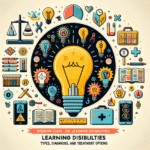
From Challenges to Solutions: Essential Practices for Managing Classroom Diversity
Introduction
As our world continues to become increasingly interconnected, the classroom environment reflects this complexity in diversity. Today’s educators are tasked with managing a myriad of cultural, linguistic, and personal differences among students. This diversity presents unique challenges; however, it also offers incredible opportunities for enriching the educational landscape. In this article, we will explore the concept of From Challenges to Solutions: Effective Practices for Managing Classroom Diversity. We will delve into actionable strategies that educators can employ to create an inclusive and conducive learning environment. Whether you are a seasoned teacher or new to the profession, this guide aims to provide you with the insights you need to transform classroom diversity from a challenge into a vibrant, enriching experience.
Understanding Classroom Diversity
The Current Landscape
Classrooms today are melting pots of languages, cultures, and socio-economic backgrounds. According to the National Center for Education Statistics (NCES), nearly 50% of students in K-12 education in the United States come from minority backgrounds. The increasing diversity in classrooms calls for a pedagogical shift that embraces cultural awareness, empathy, and innovative teaching methods.
Common Challenges
Although diversity enriches classroom learning, it also presents challenges, including:
- Language Barriers: Students may struggle with English as a second language, hindering their ability to participate fully in class.
- Cultural Misunderstandings: Different cultural backgrounds can lead to misinterpretations and conflicts among students.
- Varied Learning Styles: Each student has a unique learning style, which can complicate standardized teaching approaches.
Despite these hurdles, educators can find effective strategies to address them proactively. This article aims to guide you From Challenges to Solutions: Effective Practices for Managing Classroom Diversity.
Effective Practices for Managing Classroom Diversity
1. Foster an Inclusive Classroom Environment
Creating a welcoming atmosphere is essential for managing classroom diversity. This can be achieved by:
- Setting Ground Rules: Establish classroom norms that promote respect and inclusivity from day one. This can include guidelines for discussing differing opinions and respecting cultural differences.
- Culturally Responsive Teaching: Incorporate examples from various cultures in your lessons. This practice not only celebrates diversity but also ensures that all students can see themselves reflected in the curriculum.
Case Study: The Culturally Responsive Classroom
A school district in California implemented culturally responsive teaching methods in its classrooms. Teachers received professional development training on integrating students’ cultural backgrounds into lesson plans. As a result, student engagement increased, and disciplinary incidents decreased significantly. This case illustrates how alignment between curriculum and student identity fosters a more inviting learning environment.
2. Promote Collaborative Learning
Collaborative learning can help break down barriers among students with diverse backgrounds.
- Group Work: Form diverse groups that require students to work together towards a common goal. Each student brings unique perspectives to the table, enriching the learning experience.
- Peer Mentoring: Encourage students to support one another through peer tutoring programs. This approach not only enhances academic achievement but also builds relationships across cultural lines.
3. Use Differentiated Instruction
Understanding that not all students learn the same way is crucial in managing classroom diversity.
- Modify Assignments: Provide varied tasks that allow students to work at their own level. For example, some may engage in hands-on projects while others may prefer written assignments.
- Flexible Grouping: Rotate groups frequently so that students have the opportunity to interact with diverse peers.
Table 1: Differentiated Instruction Strategies
| Strategy | Description |
|---|---|
| Choice Boards | Allow students to select from different activities. |
| Tiered Assignments | Create tasks at varying difficulty levels. |
| Learning Stations | Set up different areas for various skill levels. |
4. Encourage Open Communication
Communication is vital for fostering understanding in a diverse classroom.
- Regular Check-Ins: Schedule weekly or bi-weekly meetings to discuss challenges, successes, and experiences. Encourage students to express their thoughts.
- Anonymous Feedback: Provide a method for students to give feedback anonymously about classroom dynamics or group work. This can help address issues that may not arise in direct conversations.
Case Study: Open-Door Policy Implementation
A middle school in New York adopted an open-door policy, where teachers made time for students to share their academic and social concerns. This initiative led to improved communication and a more connected classroom environment. Students felt empowered to discuss their challenges, leading to greater academic and emotional support.
5. Incorporate Technology
Technology can be a powerful tool in bridging gaps in classroom diversity.
- Language Translation Tools: Use apps or software that can help students translate materials into their primary languages, facilitating greater understanding and participation.
- Online Collaborative Platforms: Tools like Google Classroom or Padlet can provide accessible platforms for group work, allowing students to engage beyond language barriers.
6. Continuous Professional Development
Educators must engage in ongoing professional development to stay informed about best practices for managing classroom diversity.
- Workshops and Seminars: Attend workshops focused on diversity in education, cultural sensitivity, and inclusive practices.
- Peer Observations: Partner with colleagues to observe and critique each other’s practices to foster mutual learning and respect.
Chart 1: Impact of Professional Development on Educator Preparedness
| Professional Development Tool | Increased Preparedness (%) |
|---|---|
| Workshops | 40% |
| Peer Observations | 35% |
| Online Courses | 25% |
Conclusion
In today’s diverse educational landscape, it is essential to shift our perspective from challenges to solutions. By implementing inclusive practices, fostering open communication, and embracing differentiated instruction, educators can create a learning environment where all students thrive. The journey From Challenges to Solutions: Effective Practices for Managing Classroom Diversity involves commitment, empathy, and innovation. Let us inspire our students by celebrating their differences and leveraging these unique attributes to enrich our classrooms and communities.
FAQs
1. How can I recognize diversity in my classroom?
Recognizing diversity involves observing students’ cultural backgrounds, languages, learning styles, and socio-economic statuses. Collect data through surveys or informal discussions to better understand your students’ identities.
2. What are the signs of cultural misunderstandings?
Signs may include conflicts among students, disengagement in group activities, or lack of participation from students feeling marginalized. Observing interactions can help identify potential issues early on.
3. How can I support ESL students effectively?
Implement visual aids, simplify language, use gestures, and pair them with fluent English speakers for peer support. Creating a buddy system may also help them adjust more quickly.
4. What role does family engagement play in classroom diversity?
Family engagement is crucial as it involves parents in their children’s education and helps the teacher understand students’ home environments. Regular communication with families fosters a more supportive learning atmosphere.
5. What are some effective resources for professional development?
Consider joining organizations like the National Association for Multicultural Education (NAME), attending local education seminars, or enrolling in online courses focused on inclusive teaching practices.
6. How can I assess my teaching strategies related to diversity?
Self-reflection, peer feedback, and student assessments are effective ways to evaluate the impact of your teaching strategies. Adjust practices based on student feedback and outcomes to continually improve.
By implementing these strategies and transitioning From Challenges to Solutions: Effective Practices for Managing Classroom Diversity, educators can begin to cultivate an educational culture that celebrates and leverages diversity. Embrace this opportunity to transform your classroom dynamics and watch as your students flourish.









